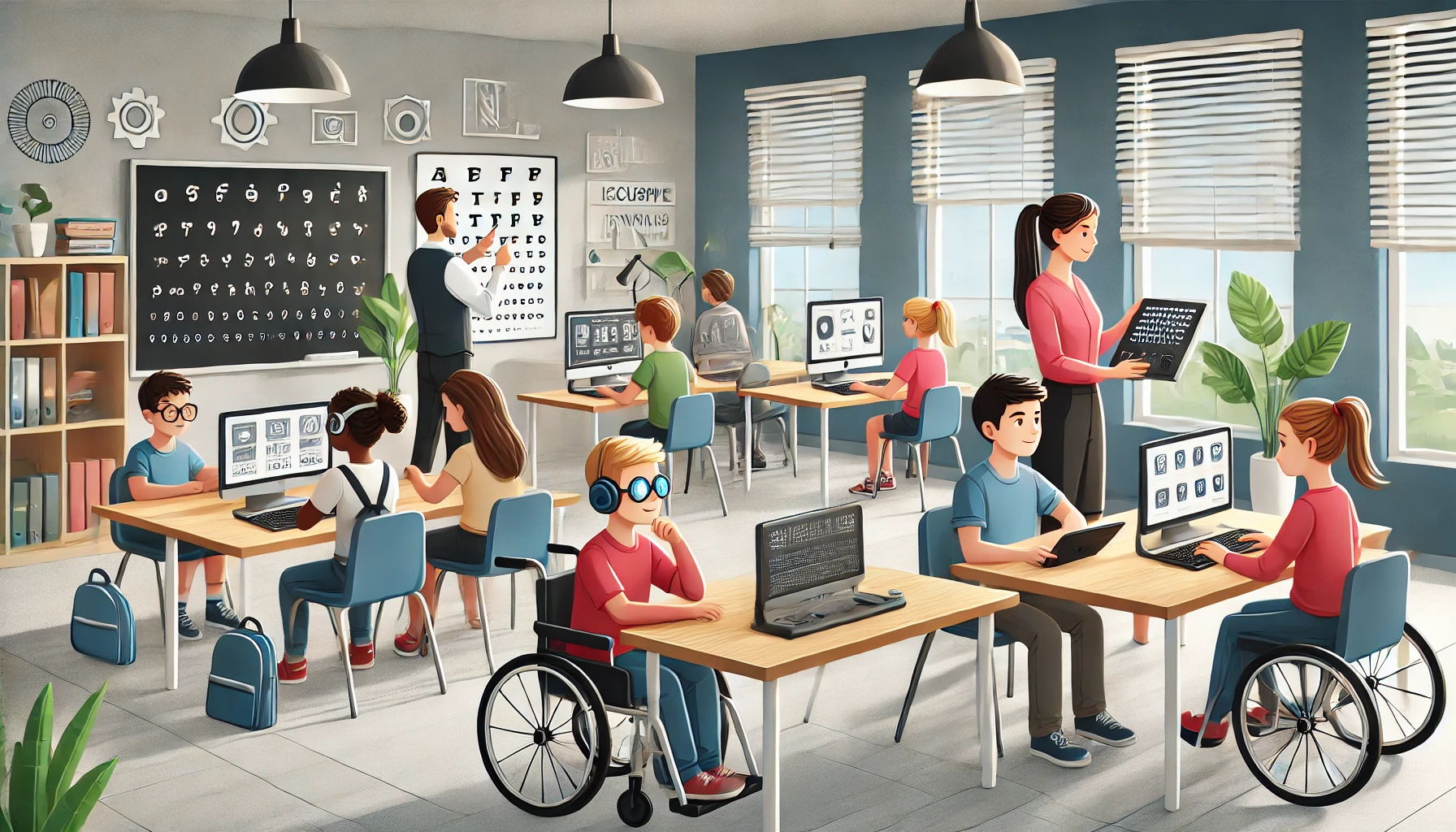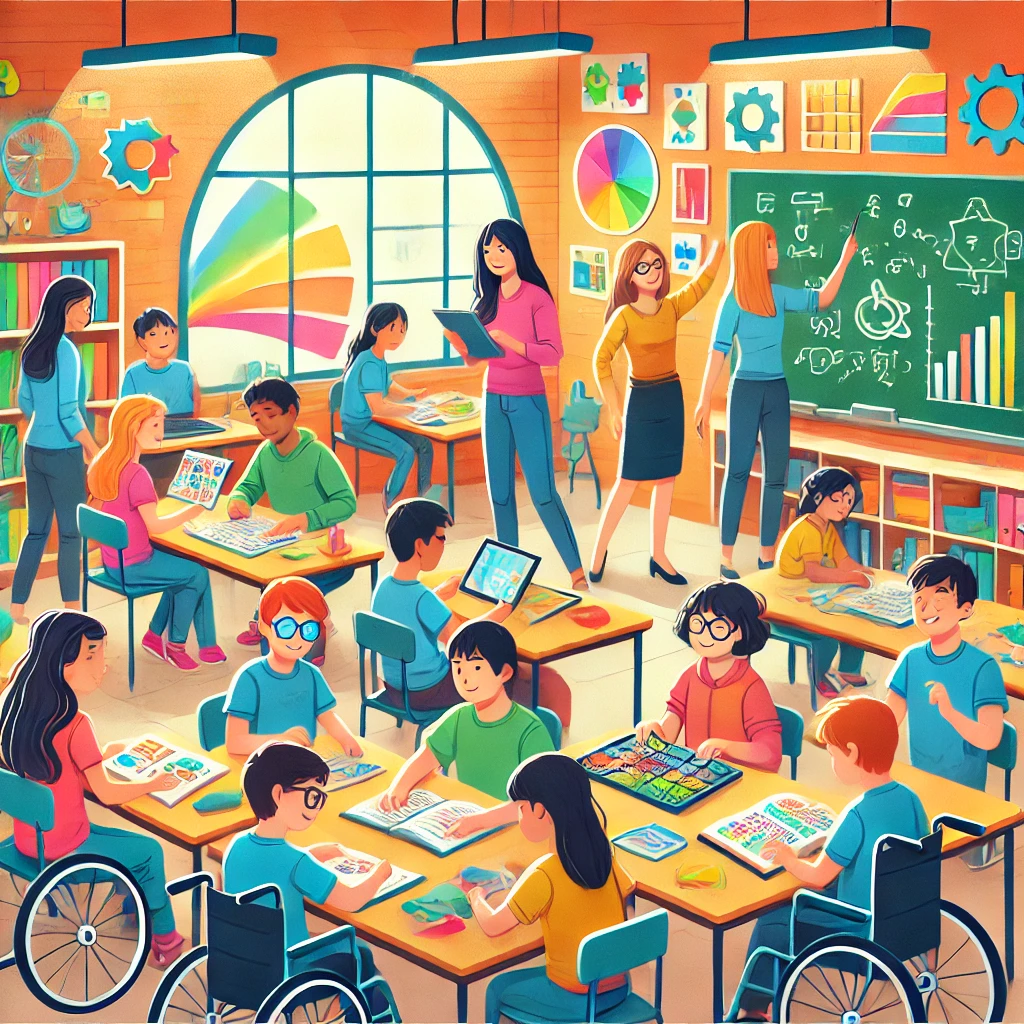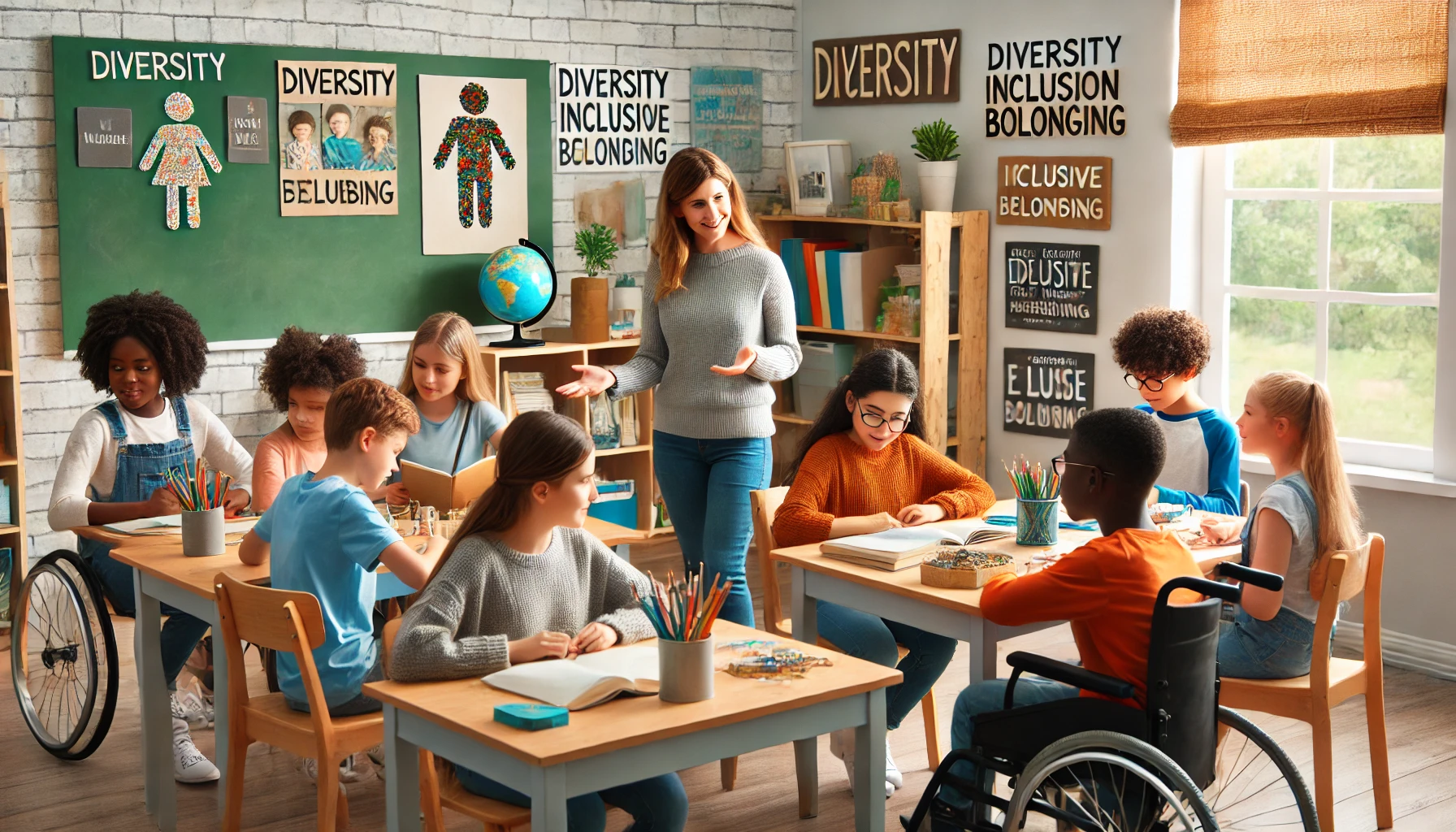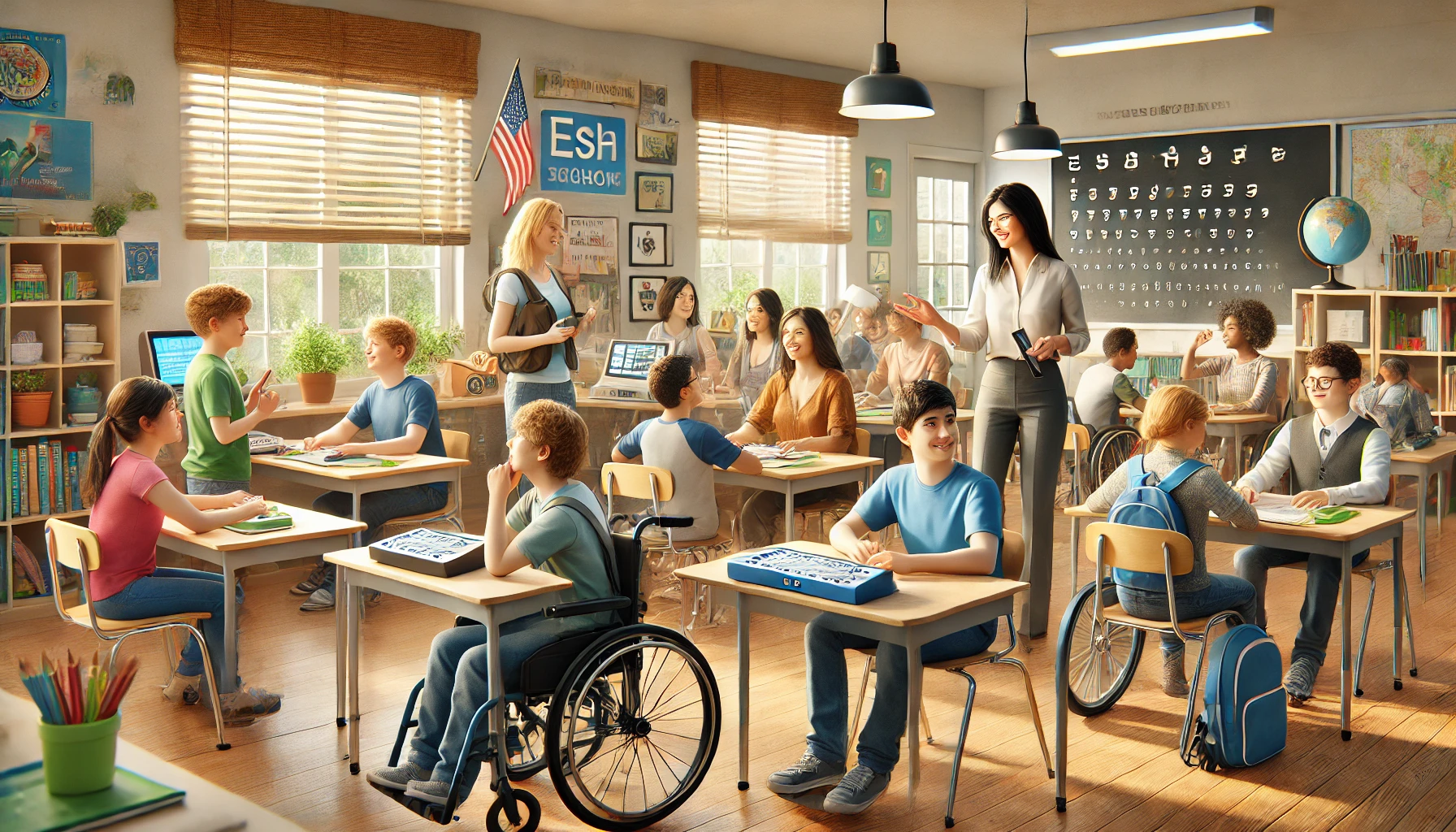Understanding Inclusive Education
In the wild world of classrooms, inclusive education is like that one friend who invites everyone to the party, ensuring that students with disabilities get the same shot at learning as anyone else. No secret clubs here—every student, whether they’re toting a wheelchair or a tech gadget, gets to hang out and learn together, showing off the spirit of fairness and inclusivity.
Definition and Principles
Inclusive education is all about mixing it up—blending students with disabilities into the hustle and bustle of regular classrooms. Think of it as a big school jamboree, where every kid, no matter their abilities or quirks, gets to participate. The heart of this approach lies in the open-armed belief that everyone deserves access to an education that suits their needs just right.
One big goal of inclusive education is smashing the walls that keep kids with disabilities from getting all those school vibes. With this approach, you see diversity in action, a vibe of togetherness, and a backdrop where every learner feels they belong, sitting side-by-side, hitting the books, or tackling class projects.
Benefits and Challenges
Sure, switching things up like this has its snafus, but the benefits for students with disabilities are huge. Being in a standard classroom means they can level up academically, sharpen their social skills, learn to stand up for themselves, and get a grip on life skills that are handy in the real world (and maybe even win at the Marshmallow Challenge).
But let’s not pretend it’s all sunshine and rainbows. There are hurdles—like needing extra support, tweaking how teachers do what they do, and getting everybody on board with understanding and acceptance. Tackling these bumps in the road is part of the journey.
Rolling with inclusive education means facing these hurdles head on while soaking up the goodness it brings. By boosting learning, sprucing up social skills, and building those must-have life skills, inclusive education turns the school scene into a starting point for diversity and sets the foundation for a society that embraces everyone.
Importance of Inclusive Education
In education, inclusive learning breaks barriers and brings people together. It’s about creating a space where everyone, no matter their background or abilities, can feel at home. This helps us build a fair and colorful community. When teachers, parents, and caregivers work together on this, they can create a school experience that celebrates each student and promotes teamwork.
Addressing Barriers to Education
Around 240 million kids with disabilities face hurdles at school, not just because of accessibility but also because of how society treats them (UNICEF). Inclusive schools aim to tear down these walls by offering support, using accessible tools, and making every student feel welcome and important.
Good inclusive education means identifying what holds kids back and finding solutions. Schools should focus on making learning environments supportive, offering the right help and resources, and getting everyone involved. These steps help create a place where every kid, no matter who they are or the challenges they face, can shine.
Promoting Equality and Diversity
Inclusive education isn’t just about physical setups; it’s about promoting values of fairness and diversity in schools. By valuing how different students are and working with it, educators create a warm learning atmosphere that allows all children to learn from each other. It’s an environment where empathy, respect, and teamwork thrive (Princeton Review).
Teachers can foster this kind of environment by recognizing and valuing the various backgrounds of their students, setting up a culturally aware classroom, making room for community learning, and strictly barring any disrespect (American University). Inclusive classrooms let kids interact with classmates from different walks of life, breaking down barriers to learning and making everyone feel they truly belong (Tulane University School of Professional Advancement).
Putting inclusivity at the forefront in education helps build schools where every student can learn the importance of diversity and thrive as part of a big, happy classroom community.
Implementing Inclusive Education
Getting inclusive education off the ground and making it work smoothly requires a few key ingredients. This section breaks down the big-ticket items that can make or break inclusive education—like teacher training, easy-to-use learning materials, and making sure school policies are on track with what’s actually happening in classrooms.
Training and Support for Teachers
Teachers stand right at the heart of inclusive education. They’re the ones making sure every kid in their class feels like they belong. So, giving teachers the right training and support is non-negotiable. They need the skills, tools, and know-how to reach every student, no matter their abilities.
Professional development programs should be all about teaching in ways that include everyone. Understanding that kids learn differently and knowing how to make education plans that fit are key. These programs help teachers set up classrooms where every student has the chance to shine—both in hitting the books and playing at recess.
Accessible Learning Materials
Inclusive education can’t just talk the talk; it’s gotta walk the walk with learning materials that everyone can use. That means making sure stuff works for kids with disabilities and other challenges.
Schools need to pony up for tech that adjusts to students’ needs — think touchscreens and speech-to-text. Learning tools that hit more senses like touch or sound, and educational materials in different formats are the name of the game. Offering a buffet of accessible resources makes sure everyone gets a fair shot at learning something new.
Policy Alignment and Data Analysis
For schools to genuinely embrace inclusive education, their policies should match the best practices, and there needs to be a keen eye on the data flowing in. When school guidelines shout out diversity and equity, everyone knows they’re in a place that supports these values.
Keeping tabs on what’s working and what’s not with data collection and analysis is a must. By keeping score of how students are doing, schools can spot what needs a tweak and see how well inclusive practices are paying off both in the classroom and on the playground. Armed with this info, schools can smartly roll out solutions that help all students meet their goals.
By focusing on teacher support, making learning materials accessible, and using data to shape policies, schools can create places where all students feel like they truly belong. With these practices in play, the doors open wide for diverse, equitable, and exciting learning journeys for every student.

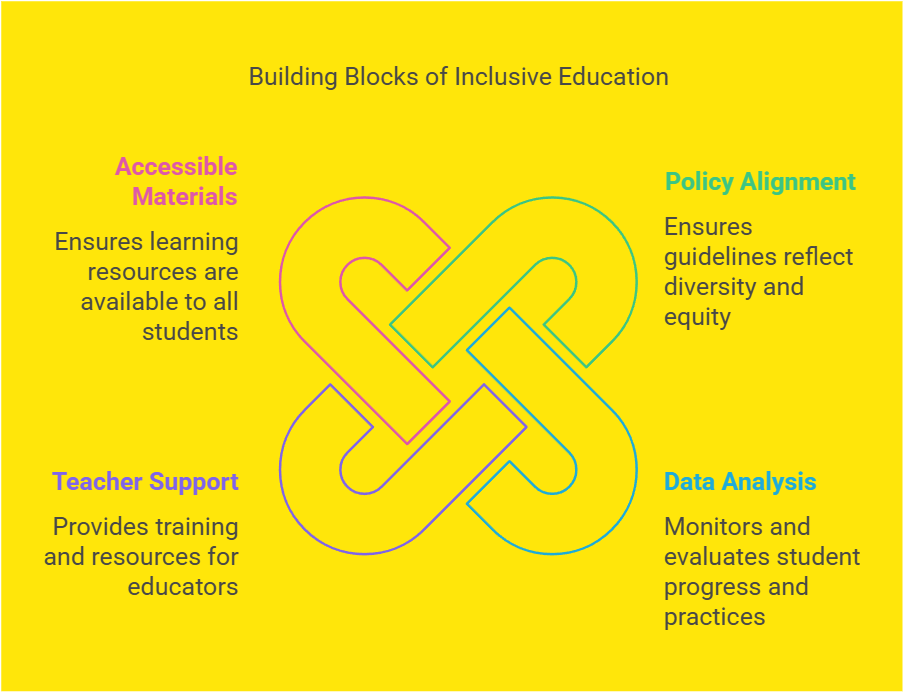
Best Practices for Inclusive Education
Creating an education system that works for everyone is like finding that sweet spot where all students, particularly those with special needs, feel welcomed and empowered. The goal? Building a classroom environment where every child can learn their best.

Universal Design for Learning (UDL)
One game-changer in making education inclusive is Universal Design for Learning (UDL). According to the folks over at Princeton Review, UDL is all about tweaking the curriculum so it resonates with each student, especially those dealing with disabilities. Imagine having lessons that are as flexible as a gym class, catering to different learning styles, abilities, and quirks. The bottom line? Give every kid a fair shot at school success.
Peer Support and Mentoring
You know that feeling when a friend has your back? That’s what peer support and mentoring bring to the classroom. Tapping into this power, as noted by the Princeton Review, means students are not just classmates but also buddies who boost each other’s confidence and understanding. Think of it as students forming their own mini-network, spreading positivity and teamwork. It’s about young people inspiring one another, making the school scene richer and more rewarding.
Cultural Respect and Inclusion
Respecting and including different cultures are like the foundation blocks of a truly inclusive classroom. Teachers who tap into this, as per American University, respect each student’s background and turn classrooms into safe zones where every culture is valued. It’s the small things, like calling out any type of rudeness or negativity, that pay off in a big way. Celebrating diverse cultural tapestries makes kids feel at home and lights up learning with new perspectives.
Incorporating these best practices doesn’t just tick a box—it’s the real deal for teachers, parents, and caregivers striving to create welcoming spaces for children with special needs. By highlighting the strengths and unique inputs every child brings, inclusive education gets a boost, making classrooms places where differences are celebrated and all students thrive.
Impact of Inclusive Education
Inclusive education does more than teach kids how to ace spelling tests or remember state capitals. It’s a lifeline that stretches out far from the classroom, deeply affecting how students grow academically and socially. It even nudges them into becoming proactive members of their communities.
Academic and Social Development
When it comes to academic smarts and social skills, inclusive education’s a game changer. It helps every student—from whiz kids to those with special needs—get better at hitting the books and making buddies. By spotlighting fairness and diversity in school, it gives everyone a seat at the table, fostering friendships between students with all sorts of backgrounds and abilities.
According to the Princeton Review, this kind of education’s a win for all, setting up a happy-go-lucky classroom that treasures all colors of the human rainbow. It teaches empathy, boosts understanding, and gets students into the groove of working as a team. The cherry on top? It helps mold a world where appreciating and celebrating differences is second nature, shaping a society that’s both open-minded and kind-hearted.
Civic Engagement and Community Involvement
Besides building brainiacs, inclusive education lights a fire under students, prompting them to dive headfirst into their communities and be active citizens. By welcoming all sorts of people and ideas, it turns students into thinkers who value everyone’s voice and perspective.
American University points out that diversity fuels the brain’s creativity engine by mixing and matching different thoughts and experiences. This means students learn to think on their feet and dream up those “Aha!” moments—crucial skills for anyone wanting to make a mark in civic life.
Schools wanting to truly embrace inclusion should consider adopting no-tolerance policies on hurtful behavior, with guidance from American University. Such policies can flip the script on cultural blunders, turning slip-ups into lessons in empathy and understanding.
In the end, inclusive education does more than teach standard subjects—it’s all about shaping minds, promoting equality, and nurturing a sense of responsibility towards others. By aiming for academic success, fostering inclusive vibes, and inspiring community engagement, inclusive education helps build communities where harmony and togetherness aren’t just ideals—they’re reality.
Creating Inclusive Learning Environments
Educating kids is a big deal, and making sure every one of them feels at home is just as important. It’s all about knocking down walls and making sure everyone, especially those special needs kids, gets the education they deserve. When teachers and schools get the hang of it, you’re talking about a place where everyone feels like they belong.
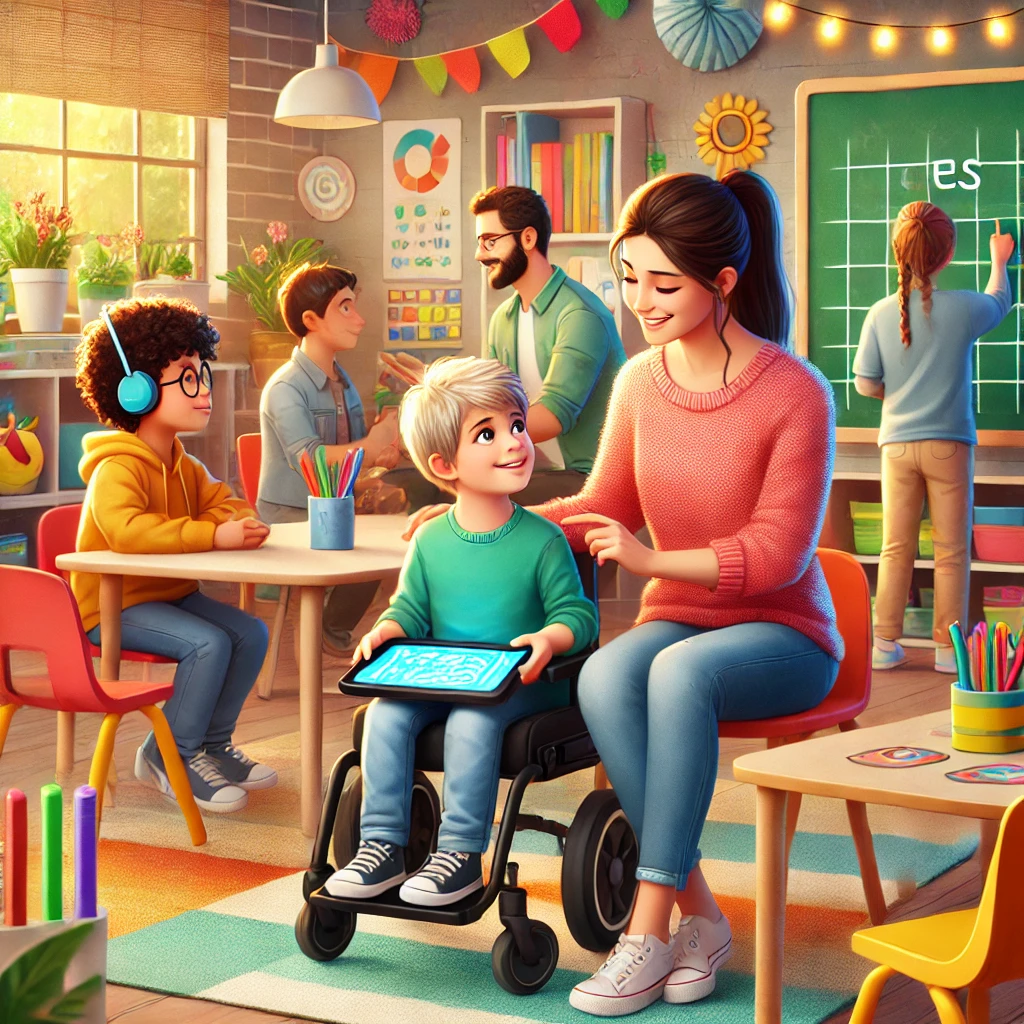
Breaking Barriers and Fostering Belonging
Picture a classroom where you’re surrounded by kids from all sorts of backgrounds, each with their unique stories. That’s what an inclusive classroom is all about – making space for all those different voices and faces without sidelining anyone. When you walk into a room like that, it’s less about your differences and more about celebrating them. Everyone should feel like they’re part of the gang, no strings attached, and no exceptions (Tulane University School of Professional Advancement).
Overcoming Challenges in Inclusivity
Of course, not all is peachy keen, and getting these inclusive spaces up and running isn’t a walk in the park. Schools often trip over hurdles like not having enough trained staff or materials tailored for every kid’s needs. It’s tough when there’s pushback or when the system ain’t fair to begin with. But that’s where the big wigs—teachers, principals, policymakers—step in. They’ve got to pull together if we want to see kiddos get the resources and support they need to blossom (Tulane University School of Professional Advancement).
Professional Development for Educators
Now for the teachers – they’re the real MVPs. To keep up with inclusivity, they need to hit the books themselves from time to time. Workshops, training, seminars that dig into cultural awareness and inclusive practices – these are the tools of the trade. Keeping up with what’s fresh in the field of inclusive education lets teachers equip themselves with what’s needed to help each student shine. Investing in their growth means they’re ready and able to make sure no student gets left behind (Tulane University School of Professional Advancement).
All in all, making schools more welcoming is work in progress. It’s about dismantling what’s holding kids back, tackling obstacles head-on, and pumping educators full of knowledge and skills. With more support pouring in, schools can transform into places where every student, special needs or not, can learn, thrive, and be part of something bigger than themselves.


